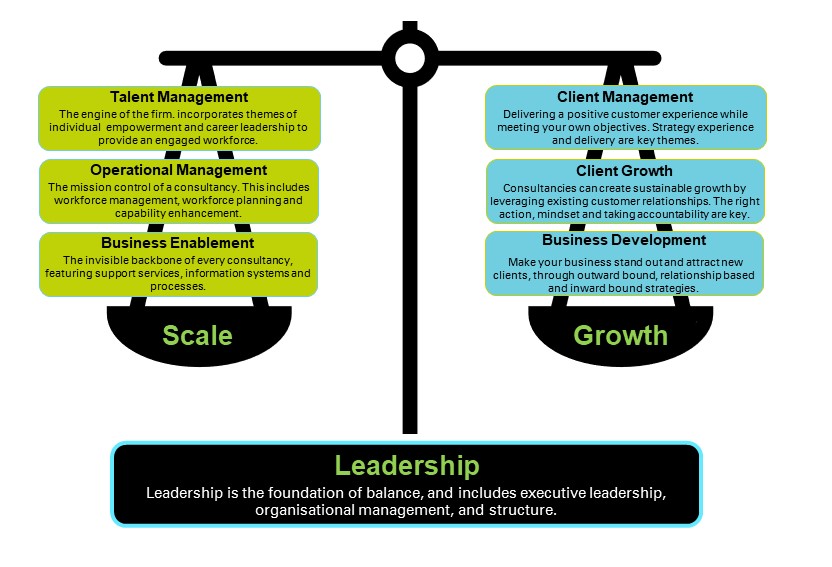The Balanced Consultancy
Most organisations tend to fall to one side or the other of this debate when constructing strategy and visions.
But how does this apply in the world of consultancy, and can both be true?
Consultancies interact with two major groups, without which they simply wouldn’t exist – clients and employees. Whilst this of course is not unique, consultancy is fundamentally a business where people are both purchaser and product.
Customer experience is the concept of understanding and responding to the interactions between customer and supplier throughout the lifecycle of the relationship – awareness generating sales, delivery and post-delivery. Consultancies often have programmes dedicated to enhanced customer experience.
On the other hand, employee experience is the function of understanding and improving all the touchpoints of the consultancy – employee relationship, once again throughout the whole lifecycle – recruitment, onboarding, during the employment relationship, offboarding and even after the relationship has ended.
Consultancies which emphasise customer experience, put the intellectual focus and company drive into sales, growth, financial and customer focused activities. The logic being that once they have sales the rest of the business will just have to catch up. There’s no point investing, they say if they don’t have the sales. However, taken too far, in real life this can result in feast and famine business. If business demand rapidly increases what follows is organisational crunch as the company struggles to meet demand. The recruitment tap is turned on but catches up too late. Demand has already subsided due to not being able to service the work, or other just a general cyclical downturn. Crisis follows as the organisation is has too many people, is no longer efficient and the workforce is pared down. The consultancy is burnt, and retreats to recruiting to demand again and the cycle continues.
Consultancies which emphasise employee experience on the other hand put the intellectual and leadership focus on people, services and operational elements – employee engagement, wellbeing, career paths and workforce planning as well as investing in systems and support to help people deliver in their roles. The guiding strategy for these organisations is the belief that if they have a great product in their people (as we have noted, consultancy is, by definition, an industry where people are the product) then business will surely follow. The downside of this approach is that this can result in slower than optimum growth as the sales functions can only sell what is available and operations focus reactively responding to demand. This can result in long term inertia and prevents the whole organisation realising its commercial potential.
But there is a middle way. And it’s about balance.
Balanced Consultancy
Balanced Consultancy emphasises equivalence for customer experience and employee experience. The model within this book demonstrates this with three Scale focused elements and three Growth focused elements with Structure holding both sides together.
This approach encourages both elements working in tandem, with neither given pre-eminence. It emphasises continual thinking about what is on the other side of the equation and constant adjustment to ensure both sides are in balance. The model acknowledges that pressure will come as one side, or another gets slightly ahead but ensures that the organisation not be out of balance for too long.
To succeed, this kind of approach requires a particular type of collaborative behaviour, focusing on interaction, respect, communications between the specialists in those areas, a commitment to seeing the other point of view and removing blockers. Counterproductive or protective behaviour isn’t tolerated, and misalignment is called out.
Let’s say you need to decide whether you want to pitch for a large piece of work, a typical client driven situation. As well as thinking about the size of the opportunity and the attractiveness of your offer to the client, you need to think about whether you have the capacity and capability to deliver and whether the client provides a positive environment for your employees.
Or there is attrition due to salary pressure in the market and you need to respond. This is an employee driven situation. You need to consider the employees case for increase, from both an individual and group perspective, but you also need to consider how this affects your margins and any necessary rates rises that need to be communicated to clients.
In both situations whilst the initial driver comes from one side of the equation, the other side is factored in as an integral part of the decision making and activity process. The faster you consider all elements then the less time the organisation is out of balance.
A balanced consultancy, encompassing the three key elements of Leadership, Scale and Growth, is the key to long term sustainable growth and reaching your potential, helping you avoid a rollercoaster experience or the frustration that comes with reactive business mindset.

